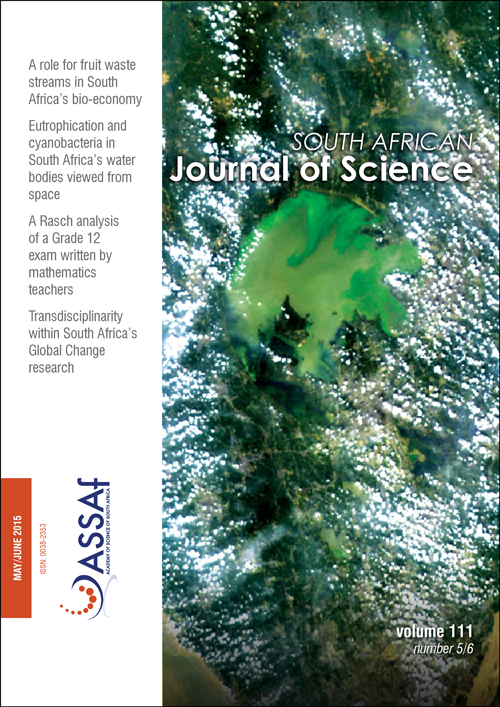Particle boards produced from cassava stalks: Evaluation of physical and mechanical properties
DOI:
https://doi.org/10.17159/sajs.2015/20140042Keywords:
cassava stalks, particle board, urea-formaldehyde, dimensional stability, thickness swellingAbstract
We investigated the potential use of cassava stalks for the production of bonded particle boards. Particle boards were produced from cassava stalks using urea-formaldehyde as a binder. Water absorption and thickness swelling tests were carried out to determine dimensional stability of the boards while modulus of rupture and modulus of elasticity tests were carried out to assess the mechanical strength of the boards. Particle boards produced using an adhesive–cassava stalk ratio of 3:1 gave the best results in terms of the lowest mean values of water absorption (20%) and thickness swelling (6.26%), as well as the highest values of modulus of rupture (4×106 N/m2) and modulus of elasticity (2366.74×106 N/m2). The particle boards produced met the ANSI/A208.1-1999 standard for general-purpose boards. The results of analyses of variance carried out revealed that the adhesive–cassava stalk ratio had a marked influence (p<0.05) on the physical properties (water absorption and thickness swelling) but not on the mechanical properties (modulus of rupture and modulus of elasticity).
Published
Issue
Section
License

All articles are published under a Creative Commons Attribution 4.0 International Licence
Copyright is retained by the authors. Readers are welcome to reproduce, share and adapt the content without permission provided the source is attributed.
Disclaimer: The publisher and editors accept no responsibility for statements made by the authors
How to Cite
- Abstract 531
- PDF 647
- EPUB 223
- XML 238












.png)